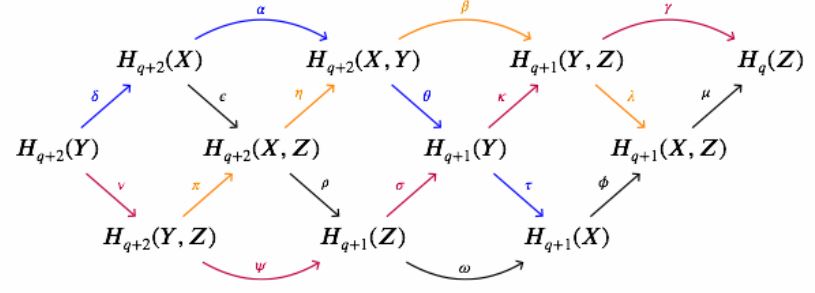nLab braid lemma
Context
Diagram chasing lemmas
Homological algebra
(also nonabelian homological algebra)
Context
Basic definitions
Stable homotopy theory notions
Constructions
Lemmas
Homology theories
Theorems
Contents
Statement
Proposition
(braid lemma)
Given a commuting diagram of abelian groups of the following form
Consider the following four sequences inside the diagram
-
;
-
;
-
;
-
.
Then: if the first three of these are long exact sequences and the fourth is a chain complex, then the fourth is also long exact.
Applications
Long exact sequence of a triple in homology
Given a generalized homology theory , then by definition for every inclusion of topological spaces, there is an long exact sequence
Proposition
For an unreduced generalized homology theory and for two consecutive inclusions (a “triple” ) there is a long exact sequence of the form
Dually for generalized (Eilenberg-Steenrod) cohomology.
Proof
Consider the following braid diagram

(graphics from this Maths.SE comment)
The blue, purple and the black sequence are the exact sequences of the pairs , and , respectively. The orange sequence is a chain complex by these exact sequences and using the commutativity of the diagram, and because the diagonals factor through . Hence the braid lemma, prop. , implies the claim.
References
- Munkres, p. 148 of Elements of algebraic topology
Last revised on August 5, 2025 at 00:44:57. See the history of this page for a list of all contributions to it.